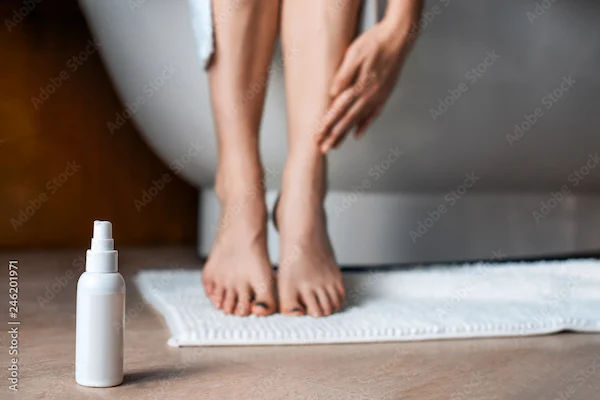How To Reduce Swelling In Hand After IV?
Explore the causes, symptoms, and quick relief tips for IV swelling. Learn effective home remedies, OTC treatments, prevention measures, long-term management tips and when to seek medical help.

Written by
Last updated on 3rd Jul, 2025
Intravenous (IV) therapy is a vital component of contemporary medicine. It facilitates directly administering fluids, medications, or essential nutrients into a patient's circulatory system. To do so, a peripheral IV is usually inserted into the hand or forearm, which can often lead to swelling. There can be several reasons behind this, and if left untreated, it can lead to other complications.
This article covers the major causes of swelling after IV, immediate relief measures, OTC solutions and more.
Causes of Swelling After IV
There can be several reasons for swelling after IV:
Infiltration
It is a condition when the IV fluid or medication leaks into the surrounding soft tissue around the vein. This can occur if an IV catheter slips out from the vein or the vein wall becomes permeable. Although IV infiltration does not cause any complications, it can be a bit painful and require treatment.
Common symptoms include:
Inflammation
Tightness of the skin
Pain around the IV site
Oedema
Blanching
Coolness to the touch
Phlebitis and Its Effect on the Hand
Inflammation of the innermost layer of the vein (tunica intima) is called phlebitis. It may be caused by damage to the blood vessel when inserting the IV catheter or by irritating medications high in alkaline, acidic or hypertonic solutions. Improperly placed catheters or drugs in the IV bag can also cause irritation. Common signs of phlebitis include:
Localised redness
Pain
Heat
Swelling
The vein may be hard or ropy to the touch
Infection
Although less frequent, an infection at the IV site might also produce swelling. Purulent ooze from the affected area often suggests infections, generally two to three days after initiating the IV site.
Without treatment, both phlebitis and thrombophlebitis may develop into an infection in the IV area. Signs of infection include:
Purulent drainage
Swelling
Redness
Pain
Fever
Immediate Steps to Take for Reducing Hand Swelling After IV
If hand swelling occurs after receiving IV therapy, immediate action is crucial to reduce pain and prevent complications:
Elevation of the Affected Hand
An effective way to reduce swelling is by elevating the affected hand above the heart level. This stimulates the fluid to flow away from the affected area, reducing discomfort and preventing more fluid from collecting in the tissues. Here are the steps to follow:
Lie down and rest the arm on the pillows.
Using a sling, support the arm when sitting or standing.
The hand must be raised above the heart for good drainage.
Application of Cold Compress
Use cold compresses on the swollen area to lessen inflammation and pain. The cold tightens the blood vessels, limiting blood flow to the affected area and reducing swelling. Here’s how to apply a cold compress:
Encase an ice pack in a towel to protect the skin.
Keep the cold compress on the inflamed area for 15-20 minutes.
Do so every few hours, as necessary.
Do not apply the ice pack directly to the skin, or frostbite may occur.
Home Remedies to Reduce Swelling in Hand After IV
Along with immediate measures, various home remedies and natural treatments can help minimise hand swelling after IV and support recovery:
Warm Compress and its Benefits
Cold compresses are helpful for the first 24-48 hours, but warm compresses can also be used afterwards to increase blood circulation and lower pain in the affected areas. The warmth of the compress relaxes blood vessels, helping to drain excess fluids from the tissues.
The steps to apply a warm compress are:
Soak a clean towel in warm water and squeeze the water out.
Then, use the warm towel to the affected area for 15-20 minutes.
Repeat several times a day.
Make sure the water is warm — not hot — to avoid burns.
Herbal Remedies
Other topical lotions can help decrease swelling and inflammation. However, testing a small area for an allergic reaction is crucial before applying it to the entire affected area.
Examples of herbal remedies include:
Aloe Vera: Applying aloe vera to the affected area helps reduce inflammation and soothe the skin.
Chamomile: Being an anti-inflammatory agent, chamomile helps calm the skin and reduce swelling. Steep chamomile tea bags in warm water and then apply them as a compress to the swollen area.
Arnica: It is a plant-based treatment commonly used to control swelling and bruising. Arnica can be applied topically as a gel or cream.
Over-the-counter (OTC) Solutions to Reduce Hand Swelling After IV
Over-the-counter medications and topical treatments can help with the pain and inflammation caused by swelling from IV therapy. They include the following:
Anti-inflammatory Medications
Nonsteroidal anti-inflammatory drugs (NSAIDs) may relieve pain and inflammation. These medications act by blocking the creation of certain chemicals in the body that lead to inflammation. Common NSAIDs include:
Ibuprofen
Naproxen
Aspirin
Topical Gels and Ointments
They can treat local pain and inflammation and are applied directly to the skin at the site of pain. Some examples of topical gels and ointments are:
Counterirritants: Creams and ointments with menthol can reduce pain.
Topical NSAIDs: Some topical NSAIDs are also available as creams or gels.
Heparin Ointments: These may help decrease inflammation.
When to Seek Medical Attention for Hand Swelling After IV
Most swelling after IV therapy is mild and resolves with elevation and rest. However, there can be some signs which indicate complications and the need for immediate medical attention. They include:
Severe pain
Increased swelling or redness
Drainage at the IV site was green and purulent.
Fever
Blistering or skin damage
Consult Top General Physicians
In case there is an infection at the IV site, individuals will notice the following symptoms:
Loss of sensation in the hand or fingers
Problems moving the same
Under such circumstances, a healthcare professional will properly diagnose the source of the swelling and suggest appropriate treatment. They can also look for complications such as compartment syndrome or systemic infection.
Preventive Measures for Future IVs
Using proper sterile techniques will decrease the chances of vein damage and infiltration. Also, IVs should only be inserted by skilled healthcare providers who are trained to handle patients with safety and comfort.
Here are some tips to follow:
Using a small needle size
Avoiding areas of flexion
Confirming the position of the catheters in the vein
Avoid multiple insertion attempts at the same location
Guidelines for Monitoring Post-IV
Early signs of complications can be detected with regular monitoring of the IV site. Healthcare providers should instruct patients on what to look for and how to raise concerns. Such guidelines include:
Monitoring the IV site closely for swelling, redness, or pain.
Ensuring proper taping of the IV line to avoid the dislodgement of the central venous catheter (CVC).
Report any discomfort or unusual symptoms promptly to a health care provider.
Flush IV line per protocol to maintain patency and prevent clots.
Long-Term Management for Hand Swelling After IV
Severe or persistent swelling and associated complications may require longer-term management strategies. The patient may be advised to perform physiotherapy to facilitate blood flow, minimise oedema and recover the function of the injured hand.
A physical therapist can develop a treatment plan tailored to the patient's needs. Distraction techniques in physical therapy may include:
Manual lymphatic drainage
Range-of-motion exercises
Compression therapy
Oedema massage
Strengthening exercises
Regular follow-up appointments with a healthcare provider can monitor the condition and adjust treatment as necessary. This allows for the quick resolution of complications and the patient's optimal treatment.
Conclusion
Swelling after IV therapy is easily treatable if managed promptly. Elevation, cold compresses, and anti-inflammatory treatments help alleviate discomfort. Opting for medical attention is crucial in case individuals experience severe pain, redness, or infection.
In some severe cases, long-term management strategies like manual lymphatic drainage and compression therapy may also be necessary. However, if IVs are performed correctly, a full recovery is possible without future complications.
Consult Top General Physicians
Consult Top General Physicians

Dr. V K Aneja
General Physician/ Internal Medicine Specialist
38 Years • MBBS, MD (Med.)
Delhi
Apollo Hospitals Indraprastha, Delhi
(75+ Patients)

Dr. Sandhya Chandel
General Physician/ Internal Medicine Specialist
16 Years • MBBS, MD (Int. Med.), IDCCM
Bilaspur
Apollo Hospitals Seepat Road, Bilaspur
(125+ Patients)
Dr. Indrajit Das
General Physician/ Internal Medicine Specialist
4 Years • "MD (Internal medicine) : Gauhati Medical College and Hospital, Guwahati (2018-2021) MD (Pathology) : Gauhati Medical College and Hospital, Guwahati (2012-2015) MBBS (Bachelor of Medicine, Bachelor of Surgery) : Silchar Medical College, Assam (2003-2008) "
Guwahati
Apollo Excelcare Hospital, Guwahati

Dr. Mohamed Azeem
General Physician/ Internal Medicine Specialist
2 Years • MBBS,MD(Internal Medicine) CCEBDM
Karaikudi
Apollo Hospitals Karaikudi, Karaikudi

Dr. S K Sahoo
General Physician/ Internal Medicine Specialist
30 Years • MBBS, MD
Noida
Apollo Hospitals Sector 26, Noida
(125+ Patients)
Consult Top General Physicians

Dr. V K Aneja
General Physician/ Internal Medicine Specialist
38 Years • MBBS, MD (Med.)
Delhi
Apollo Hospitals Indraprastha, Delhi
(75+ Patients)

Dr. Sandhya Chandel
General Physician/ Internal Medicine Specialist
16 Years • MBBS, MD (Int. Med.), IDCCM
Bilaspur
Apollo Hospitals Seepat Road, Bilaspur
(125+ Patients)
Dr. Indrajit Das
General Physician/ Internal Medicine Specialist
4 Years • "MD (Internal medicine) : Gauhati Medical College and Hospital, Guwahati (2018-2021) MD (Pathology) : Gauhati Medical College and Hospital, Guwahati (2012-2015) MBBS (Bachelor of Medicine, Bachelor of Surgery) : Silchar Medical College, Assam (2003-2008) "
Guwahati
Apollo Excelcare Hospital, Guwahati

Dr. Mohamed Azeem
General Physician/ Internal Medicine Specialist
2 Years • MBBS,MD(Internal Medicine) CCEBDM
Karaikudi
Apollo Hospitals Karaikudi, Karaikudi

Dr. S K Sahoo
General Physician/ Internal Medicine Specialist
30 Years • MBBS, MD
Noida
Apollo Hospitals Sector 26, Noida
(125+ Patients)
.webp)

